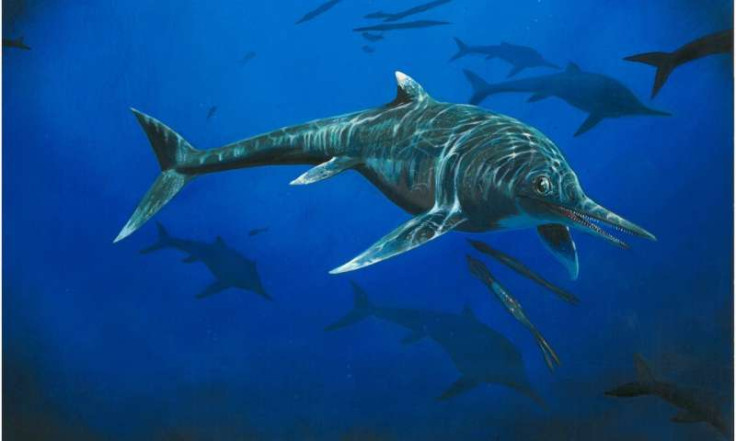Giant reptile found intact inside belly of ichthyosaur fossil found in China
Paleontologists believe the ichthyosaur died shorty after consuming its last meal due to a broken neck
A team of palaeontologists have found a giant species of reptile intact and well-preserved inside the stomach of a large ichthyosaur fossil in the Guizhou province of southwestern China. The marine carnivore, which is known to have existed more than 240 million years ago, was first discovered in 2010. However, it took scientists an entire decade to finally excavate the entire fossil and conduct further examinations.
Upon digging out the prehistoric remains of the creature, scientists documented a rather large prominent bulge in its abdomen. This they say, could be an evident case of megapredation, where large animal species become predators of other large animals.
In the published study of the marine fossil released last Thursday on iScience, the researchers believe the five-meter long ichthyosaur may have died almost as soon as it consumed its reptilian prey. It is quite possible that it bit off more than it could chew and fatally injured itself as it tried to engulf its super-sized meal.
Ichthyosaurs are categorised as reptiles, but possess more dolphin-like characteristics that enabled them to dominate waters 250 million years ago. Their teeth are blunt, which may suggest they could have been on the lower tiers of top predators which allowed them to thrive during the Mesozoic era. However, not much evidence has been found as to what species they preferred to consume.
Researchers mostly rely on tooth and jaw shapes of fossil finds to analyse diets of prehistoric creatures. Apex predators typically have large, sharp teeth. Since ichthyosaurs have a blunter set of teeth, they are thought to feed mostly on smaller prey such as cephalopods.
The main culprit behind the ichthyosaur's death was a large lizard-like aquatic reptile called a thalattosaur. It was documented to have measured just as long as its predator but seemed to be a lot skinnier. The thalattosaur's remains show very little evidence of digestion, which makes it easy to assume that the ichthyosaur may have choked and died soon after it chomped down on the reptile. Its limbs were still partially attached to its body while packed inside the ichthyosaur's gut. The tail was no longer attached but excavators found it nearby, leading them to a conclusion that it was ripped off before the reptile was swallowed whole.
Ichthyosaur’s Last Meal Is Evidence of Triassic Megapredation - UC Davis https://t.co/f1731XeqmE
— UCDavis News Service (@UCDavisNews) August 20, 2020
Further examination of the ichthyosaur showed a detachment of the head from its body, indicating the highly probable cause of its death was a broken neck.
Dr Ryosuke Motani, professor of Earth and planetary sciences at the University of California said, "we always guessed from tooth shape and jaw design that these predators must have fed on large prey but now we have direct evidence that they did."
The research team has been studying the dig site for more than a decade and the quarry has been opened as a museum. Excavation projects are still being done at the site as Dr. Motani expressed his excitement -- "New things are coming. At this point, it's beyond our initial expectations, and we'll just have to see what we'll discover next."

© Copyright IBTimes 2025. All rights reserved.





















